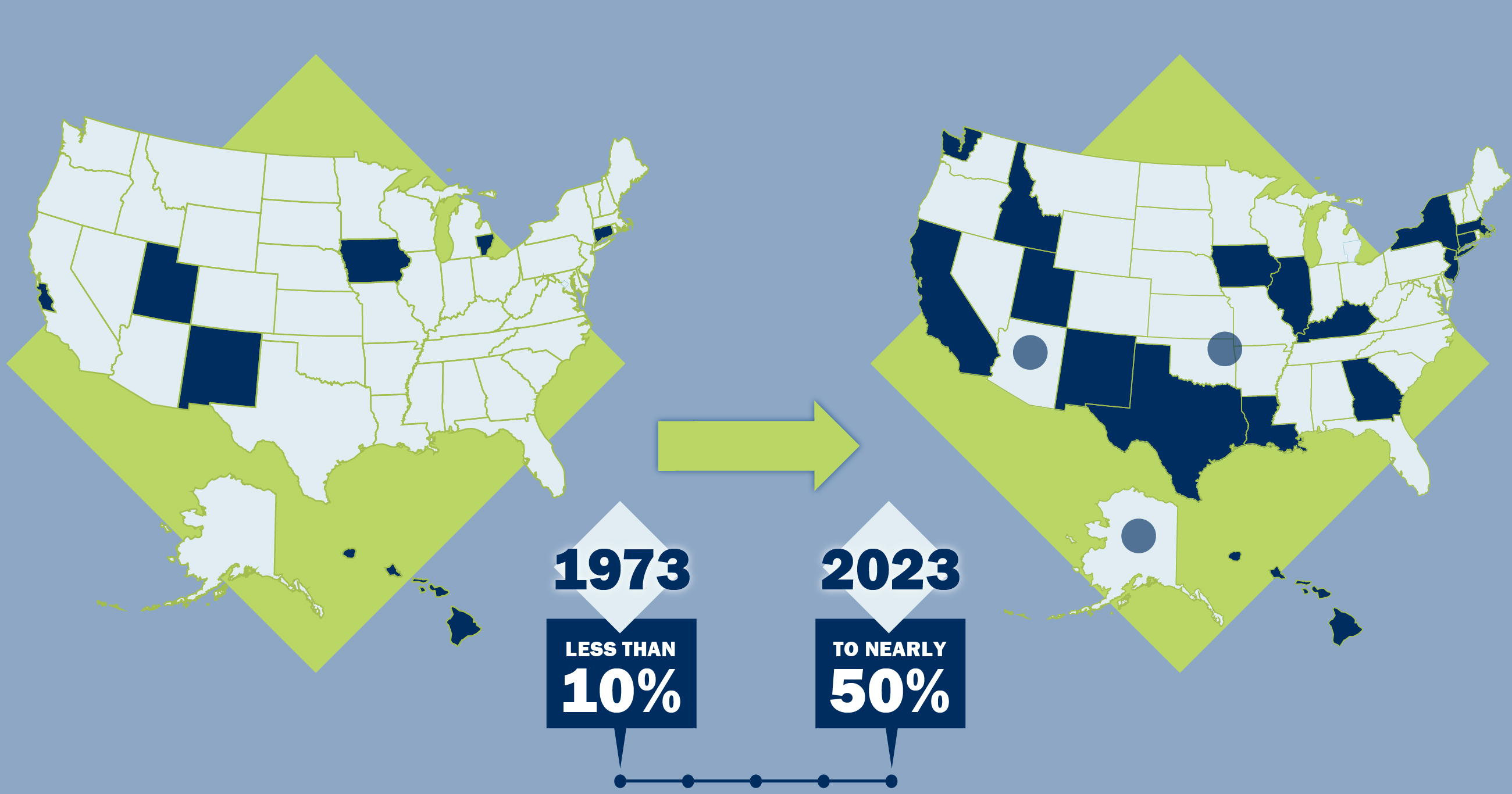SEER collects data on cancer cases from various locations and sources throughout the United States. Data collection began in 1973 with a limited number of registries and continues to expand to include even more areas and demographics today.
The National Cancer Act (NCA) of 1971 expanded the authorities of the National Cancer Institute (NCI) and its director, including the mandate to establish the National Cancer Program. As a direct result of the NCA, the National Cancer Program required the creation of a data bank for the collection, storage, analysis, and dissemination of cancer data to support research on prevention, diagnosis, and treatment.
This marked the birth of the Surveillance, Epidemiology, and End Results (SEER) Program, the main program that the NCI uses to support cancer surveillance activities that enable monitoring trends in cancer diagnosis and outcomes. Case ascertainment and data collection for the SEER Program began with January 1, 1973, diagnoses in several geographic areas of the United States and its territories. Geographic area and demographic coverage have expanded over the past 50 years, to represent nearly 50% of the U.S. population today.
Evolution of the SEER Logo
SEER 50th in the News
-
August 2024
50th Anniversary Issue of the National Cancer Institute's SEER Program: A Half-Century of Turning Cancer Data into Discovery , JNCI Monographs
, JNCI Monographs -
September 18, 2023
SEER 50th Anniversary, Toward Precision Cancer Surveillance Blog -
August 2023
NCI's SEER Program: 50 Years of Turning Data Into Discovery , For The Record
, For The Record -
April 25, 2023
SEER Marks 50th Anniversary and Leverages New Data Technologies, CBIIT News -
February 27, 2023
Celebrating Fifty Years of SEER, DCEG News Updates -
February 3, 2023
SEER Marks 50 Years of Turning Cancer Data into Discovery, NIH Record
SEER Introduction
Quotes on the Value of SEER
Dr. Monica M. Bertagnolli
Director, National Cancer Institute
Jennifer L. Moss, PhD
Assistant Professor, Department of Family and Community Medicine
Penn State College of Medicine
Philip S. Rosenberg, PhD
Senior Investigator, Biostatistics Branch
Division of Cancer Epidemiology & Genetics
Population Coverage Change in 50 Years
SEER began collecting data on cancer cases on January 1, 1973, in the states of Connecticut, Iowa, New Mexico, Utah, and Hawaii and the metropolitan areas of Detroit and San Francisco-Oakland. Since then, the SEER Program has been expanded to cover numerous additional areas. See About the SEER Registries and the List of Registries for detailed information on the SEER Registry coverage.


